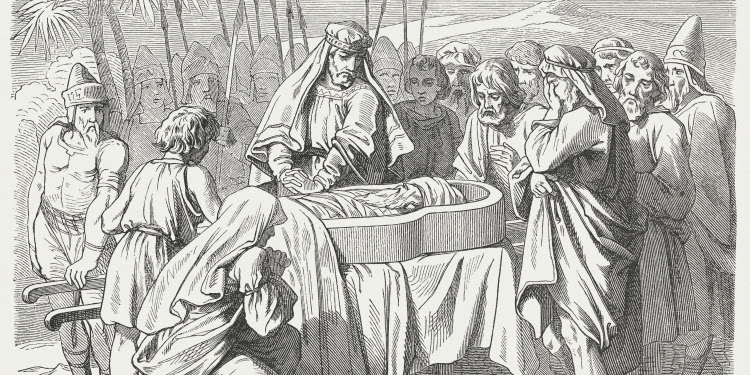Seven Days
The Fellowship | February 12, 2019

Comfort, comfort my people, says your God. — Isaiah 40:1
In the Jewish tradition, burial is followed by three successive stages of mourning that decrease in intensity, gradually bringing the family members from the solitude of their anguish back into the community. The first period is called the shiva¸ which means “seven,” during which visitors come to comfort the mourners, or family members, for seven days.
In fact, comforting mourners is considered one of the greatest mitzvoth, divine commandments. This is expressed in the Jewish Bible when God, through the prophet Isaiah, commanded, “Comfort, comfort my people” (Isaiah 40:1), and in the Christian Bible, when the apostle Paul talked about “the God of all comfort, who comforts us in all our troubles, so that we can comfort those in any trouble with the comfort we ourselves receive from God” (2 Corinthians 1:3-4).
During the shiva, all mirrors are covered to symbolize that this is a time during which the mourners are not concerned with appearances and other external things. Rather, it is a time to focus on what matters most – the lost loved one, faith in God, and the friends and family. Mourners generally do not leave the house, and the community provides food for the family.
Mourners sit on low chairs (from which the expression “sitting shiva” is derived), forgo leather shoes, do not shave or get haircuts, and do not wear freshly laundered clothing. During this first week of intense mourning, grief is expressed through these practices.
The first time mourning for seven days is mentioned in the Bible is when Joseph mourns for Jacob: “ . . . they lamented loudly and bitterly; and there Joseph observed a seven-day period of mourning for his father” (Genesis 50:10). However, according to the Talmud, it was Moses who established the seven-day mourning period as an official custom. In his wisdom and sensitivity, Moses understood that people would benefit from a designated time period for mourning, with a beginning and an end, so that although they would grieve, they would also find comfort and the strength to move on.
This ritual was carried out in the Christian Bible as well, when mourners gathered to comfort Mary and Martha in the loss of their brother, Lazarus (John 11:17-19) and then in the book of Acts, when the widows gathered to mourn the loss of Tabitha (Acts 9:39).
The week of shiva also is designed to bring about healing. Part of the mourning process is celebrating the life of the loved one. To that end, it is customary to have photos of the deceased and other memorabilia on display. Stories about his or her life are shared. The life that was lost is appreciated and celebrated. At the same time, mourners are encouraged to express their pain to comforters who are there to listen and offer support. In this way, when the seven days are over – after one whole week – the mourners have already begun to heal.
The seven-day period carries with it the wisdom and sensitivity that mourning is healthy, honorable, and an important part of the grieving process. However, after a week of sitting shiva, the mourners are then to “get up” from shiva. They cannot remain frozen or paralyzed in the endless abyss of grief. After seven days, the family is encouraged to resume the rhythms and routines of daily life, while still honoring the memory of the departed.
